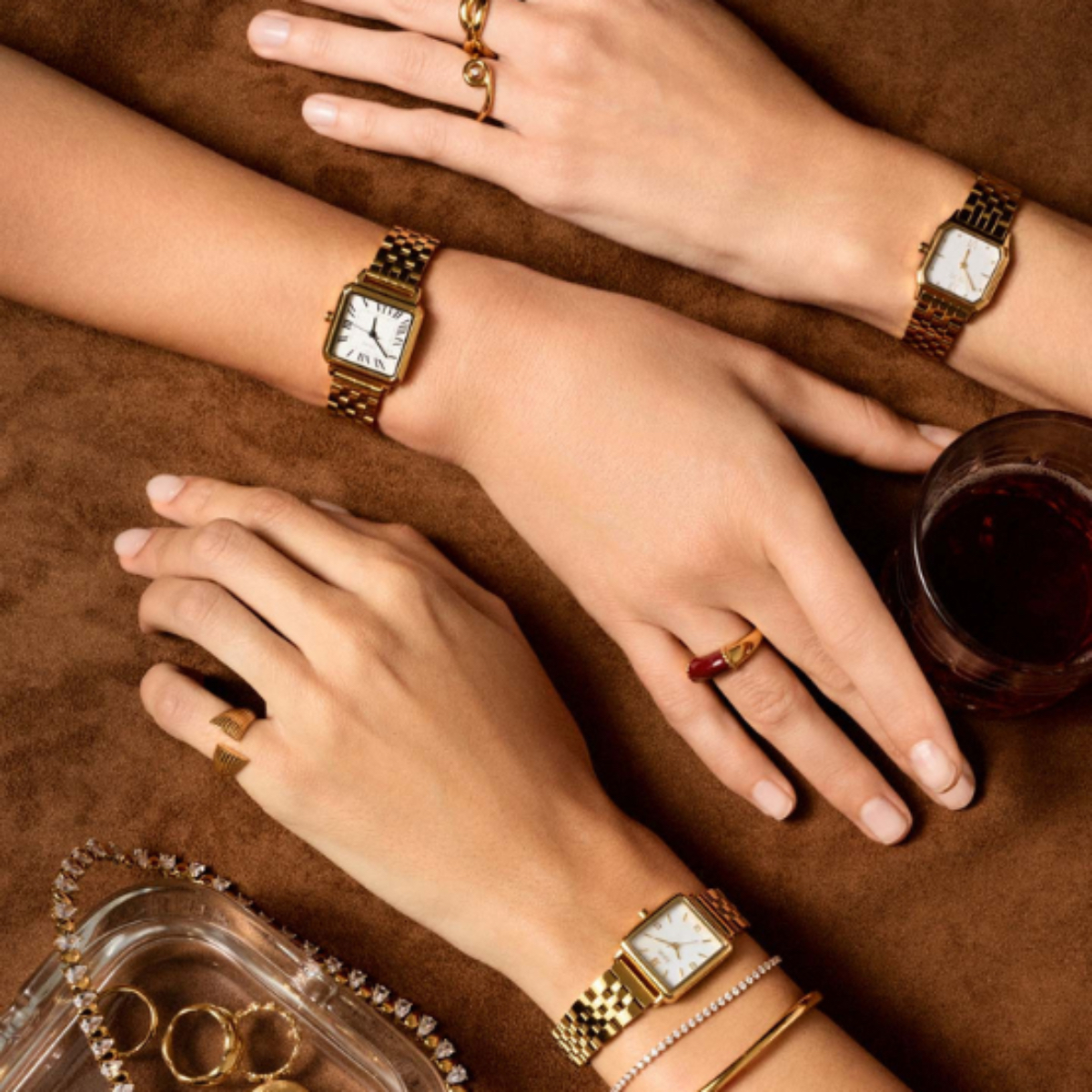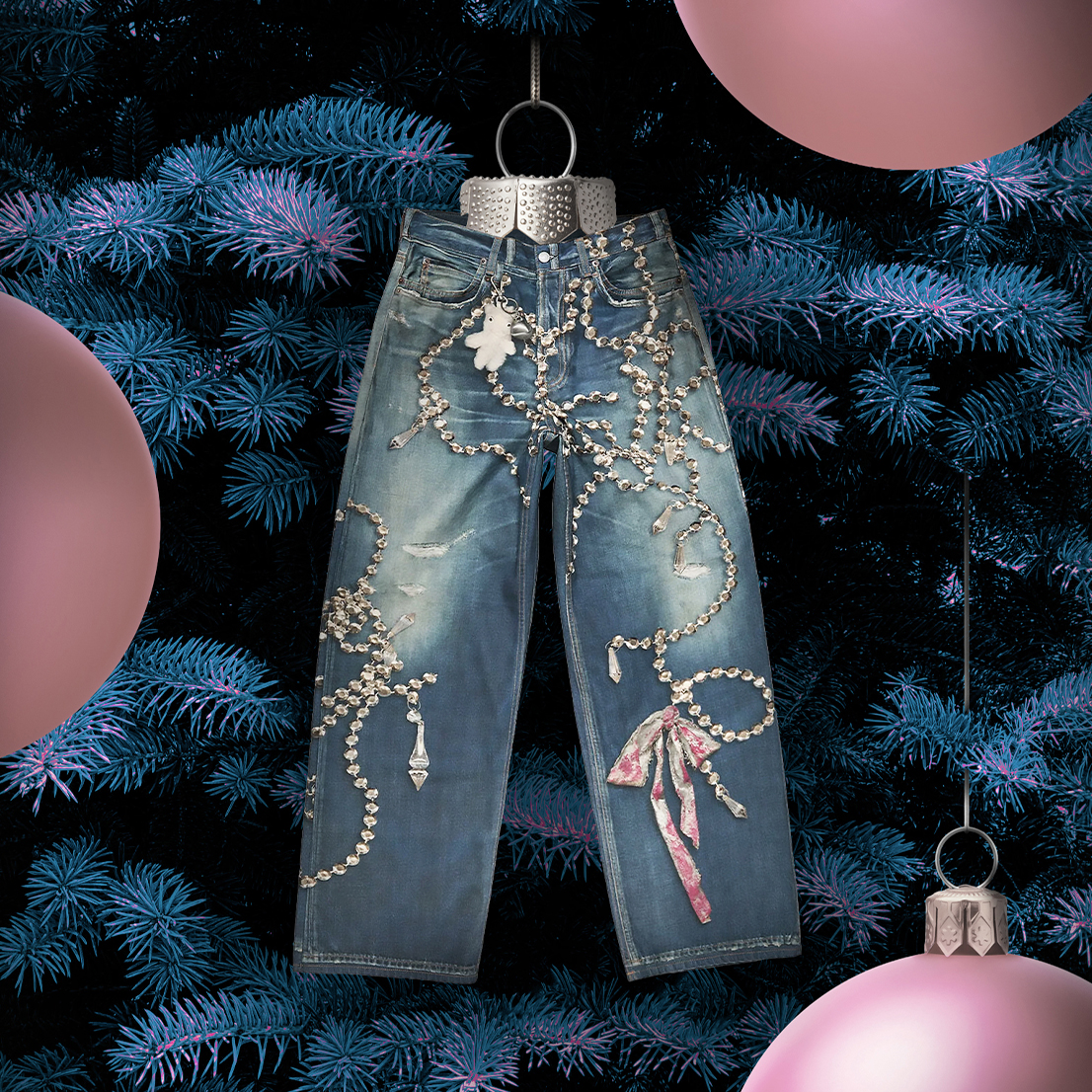After almost twenty-four months in captivity, long dresses, also known as gowns, are back on the streets. But it wasn't just the pandemic that pushed them to the back of the closet. In the last decade, fashion has preferred the practical side to the formal side and, as a consequence, the fantasy and glamour that we associate with eveningwear have faded away. Now, in a more or less expected volte-face, several designers are again proposing looks loaded with drama and charisma, whose purpose seems to be only one: to parade on a red carpet.
After almost twenty-four months in captivity, long dresses, also known as gowns, are back on the streets. But it wasn't just the pandemic that pushed them to the back of the closet. In the last decade, fashion has preferred the practical side to the formal side and, as a consequence, the fantasy and glamour that we associate with eveningwear have faded away. Now, in a more or less expected volte-face, several designers are again proposing looks loaded with drama and charisma, whose purpose seems to be only one: to parade on a red carpet.
It is called Academy Red and, contrary to popular belief, it is not red, but bordeaux. Its unique hue ("A secret color, whose precise specifications show organizers won't reveal for fear of imitations," according to the LA Times) is said to flatter the famous people who walk through it. And despite its apparent velvety appearance, it is made from nylon in a mill in Dalton, Georgia, known as the "Carpet Capital of the World." Once used, it is destroyed "in an undisclosed manner" by the event organizers. Since 2008, American Turf & Carpet, a division of Signature Systems Group, has been the company responsible for installing it. It takes a team of about 18 workers and almost 900 man-hours to assemble about 30 rolls of carpet, the total weight of which reaches 286 kilograms. Its price is proportional to its notoriety: 23 thousand euros, installation costs not included. The Oscar red carpet - or, if you prefer, the most famous red carpet on the planet - seems inseparable from the history of cinema. However, it only came into being in 1961, when the Academy of Motion Picture Arts and Sciences decided to add it as part of the ceremony. Stroke of genius - just as theater mogul Sid Grauman had predicted when he orchestrated Hollywood's first major premiere in 1922 and put up an impressive red carpet at the Egyptian Theatre for the screening of Robin Hood. The red carpet became, almost immediately, one of the most anticipated moments of the Oscars telecast. It is no exaggeration to say that today that parade of glitz and glamour is responsible for a large part of the show's ratings - the answer to the question "What's she wearing?" sometimes seems to be as or more relevant than the announcement of the winner of category X or Y. However, for about a year and a half there was no need to order any copies of Academy Red. The COVID-19 pandemic forced a mini-event to be held in 2021, relegating the 93rd edition of the Oscars to a footnote. It was therefore with joy and relief that in April of this year, the Dolby Theatre in Los Angeles welcomed guests for a night of celebration. As at the end of a long battle - notwithstanding the Russian invasion of Ukraine weeks earlier - nominees and other guests arrived on the red carpet with sky-high doses of pizazz, in a celebration of life and beauty the likes of which had not been seen in a long time: Billie Eilish, Serena Williams, and Jessica Chastain (Gucci), Maggie Gyllenhaal (custom Schiaparelli), Megan Thee Stallion (Gaurav Gupta), Zoë Kravitz (Saint Laurent), Jada Pinkett Smith (Jean Paul Gaultier), Nicole Kidman (Armani), Olivia Colman (Dior), and Aunjanue Ellis (Versace) were some of the best-dressed of the night, with gowns reminiscent of the glamour of other times. Is the red carpet finally back?
It’s possible. Months and months of forced isolation. Days on end when the only clothing required was a pair of sweatpants and a sweater, since contact with the outside world was limited. We won't be launching firecrackers before the hour, but it's very likely that we won't want to go out on the streets like the abominable snowman again any time soon. It's not our fault, of course. We are just a product of the times in which we live. And the era we live in has, for years, turned its back on anything that rhymes with "protocol," focused as it was on minimalism and its derivatives, an obsession that took away the pieces with more personality - namely dresses, long or not, where sequins, velvets, satins, and brocades used to appear. For a few seasons, not trying too hard was considered cool. Alas, anyone who had the unfortunate idea of wearing red lipstick and heels when the idea was to bring back heroin chic or elevate some close relative of athleisure to the god of fashion. Until, forced to live with our own fixation, we found ourselves tired of so much "letting go" and realized that, after all, a little "dressing up" doesn't hurt anyone. This is where a group of names come in, including Christopher John Rogers, LaQuan Smith, Nensi Dojaka, and the Taller Marmo duo, whose creations give new meaning to the word eveningwear. They are the ones responsible for deconstructing (once again) our relationship with "eveningwear," as if inspired by the glamour of other eras - Grace Jones, Bianca Jagger, Tina Turner, Marilyn Monroe, Elizabeth Taylor, Angelica Huston, the women who inspire these designers were proud to practice the maxim "more is never too much.” It was these designers who, along with some established brands, were responsible for the recent breath of fresh air (revolution?) in the looks we now see on the red carpet. The first change concerns color. Where previously we found only neutral tones (black, night blue, beige) we now see an explosion worthy of the brightest rainbow: neon colors, namely bright pink and lime green, are as appropriate for the red carpet as any other. Proof of this is the incredible Gucci that singer St. Vincent wore to the Grammys, or the Maison Margiela that Gwen Stefani chose for the Met Gala - and which, as one American publication wrote, "you could see from Staten Island." The second new feature is the introduction of capes/hoodies, something that is both modern and empowering, for the sense of confidence it provides. Seeing Tessa Thompson, one of Hollywood's new muses, at the Venice Film Festival in a red Elie Saab mini dress - which also included a removable hood that extended from the waist to the shoulder and a gigantic train that enveloped the actress in a scarlet cloud - was something of a dream. She commanded the dress, not the other way around. The third noteworthy change is the return of the back. It takes courage to "strip your back", so this has always been a trend that has never been given much importance. Renate Reinsve, the protagonist of The Worst Person in the World, chose a stunning Louis Vuitton backless for the Oscar ceremony and proved that some sayings never die: "People will see you walk into the room, but they will always remember how you leave it."
Some people have lived an entire lifetime with an exact sense of what it is like to leave a room with a bare back. "I never go outside unless I look like Joan Crawford, the movie star. If you want to see the girl next door, go next door. If you want to see the girl next door, go next door”, said Joan Crawford, who was rarely seen without the equivalent of two hours in the makeup chair. And if the habits of a movie star seem too exorbitant to you, ask your grandmother or any older relative how she dressed during World War II. In the middle of the conflict, the pleasure of wearing nylon stockings had to give way to the urgent demand for this material to make parachutes. Far from giving up this whim entirely, women took eyebrow pencils and drew lines along the backs of their legs to give the illusion of the (hyper-sensual) seams of tights. Would we be up for that in 2022? Definitely not. The introduction of ready-to-wear in the middle of the last century caused the massification of trends, the copying and trivialization of fashions. Clothes stopped being elitist and became democratic. The result? Style, which until then was something non-negotiable, became accessible and "saleable"; glamour ceased to be relevant and became ambiguous; fashion became futile, uninteresting, impersonal; creativity vanished, so many demands of the consumer society; originality gave way to plagiarism and constant déjà-vu. The new millennium glamorized - and this is an interesting expression - the carefree wearing of beach sandals in the metropolis and applauded the torn and washed jeans in places of worship. In less than a hundred years, we have gone from one extreme to the other: we stopped being impeccably dressed and, in the name of some comfort, applauded slovenliness. We no longer have time for ourselves and for glamour, which has been locked away on black and white television. Until now.
Among the moments that promise to go down in this year's fashion history - regardless of what happens in the first weeks of December, of course, there's nothing we can do about that - two are particularly impressive: at the end of November, Dua Lipa attended one of the last concerts of Elton John's final tour, to which she arrived in a magnificent Balenciaga in black silk taffeta with a gigantic (wonderful, incredible) train - a recreation of the piece originally worn by Nicole Kidman at the presentation of the couture 2021 collection of the maison -, coordinated with the already famous pantaleggings, one of Demna's most copied inventions, long gloves and Bulgari jewelry; months earlier, in September, Lizzo landed on the Emmys red carpet in a stunning Giambattista Valli tulle gown, whose layers added even more drama to her already intense color - crimson. A hypothetical list of "most glamorous of the year" would still include Zendaya, who gave consecutive style lessons in all her appearances (namely at the Emmys after-party, where she appeared in an ultra-sexy Valentino), Lady Gaga, a vision of Hollywood's golden age in Ralph Lauren, at the BAFTAs, or Hailey Bieber, elegant in an ivory Saint Laurent shawl, at the Met Gala. It will not be a consensual choice, of course, because many "must-have" celebrities are left out - where are Zoë Kravitz, Lily James, Blake Lively, Olivia Wilde, Taylor Swift, Florence Pugh, Anne Hathaway, Beyoncé, and dozens of other stars who gave color and sparkle to this (very strange) 2022? In our collective memory. It is there that we find, one by one, the looks that we saw paraded on various red carpets, and that made us believe that it might be possible to dream of a (much desired) return of glamour.
Translated from the original on "The Velvet Touch" issue of Vogue Portugal, published december 2022.Full stories and credits on the print issue.
Most popular
.jpg)

Relacionados
.jpg)
.jpg)




